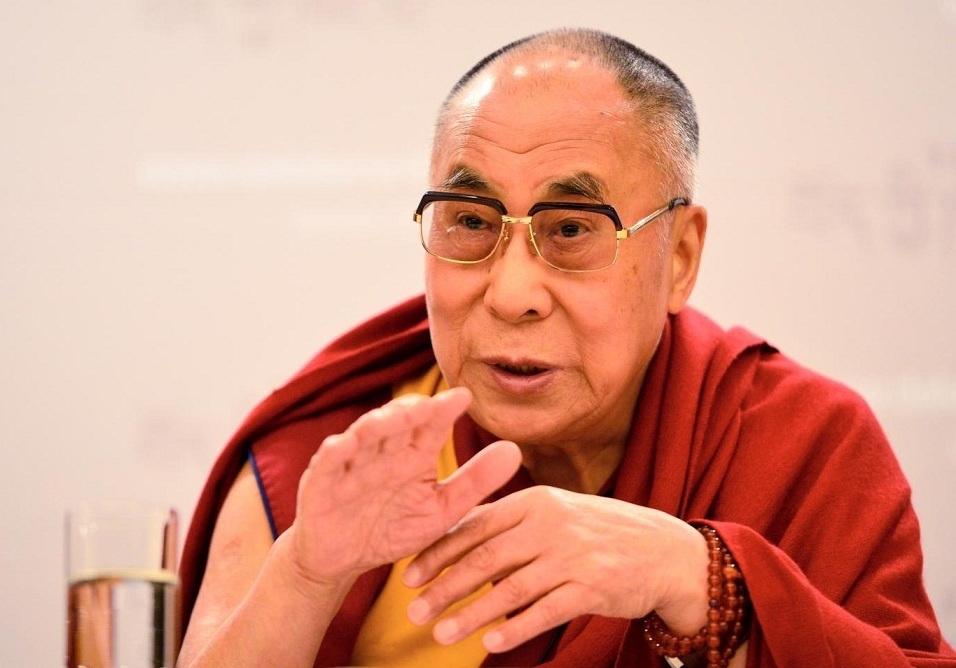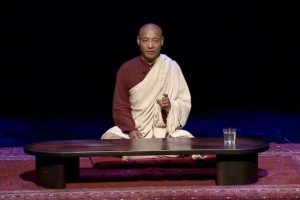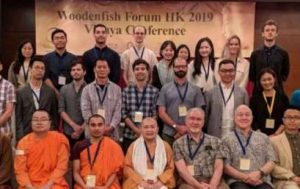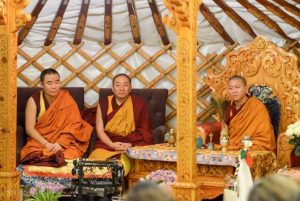
This final installment in our four-part series “Approaching Vajrayana”* addresses an issue common to all of Buddhism: how its science is perceived, and how it stands apart from our familiar modern science. This comment is not so much about which science is more valid, but more about appreciating their differences. Finally, a comment on the practical situation of studying and practicing Buddhism in modernity.
The Premise of the Buddha’s Teachings
Nowadays Buddhism is approached outside of its traditional cultures, and we might want to appreciate how the great science of enlightenment stands apart from the modern science most of us have grown up with. Very briefly, we can say that Buddhism and what we loosely call modern science share a common epistemic premise of empiricism. But in the case of Buddhism, this empiricism is based on the subjective rather than the objective dimension. As a result, these two sciences end up with very different ontological views. Suffice it to say that the objectivist thrust of modern science results in information and data, while the subjectivist thrust of Buddhist science, Dharma, results in wisdom. This is not really about better or worse, good or bad. The author of this article would rather fly in an airplane constructed by modern scientists and engineers than by Tibetan lamas and yogis, yet for the important issues of life, he chooses to consult the latter.
The Buddha’s objective was to remove suffering, and his teaching has continued to successfully serve as a remedy for the cause of suffering—confusion. In that the Buddha’s teaching addresses the nature of consciousness systematically, logically, and rationally, there is no reason why the modern, analytically trained person should not appreciate what the Buddha taught.
A Tale of Two Sciences
And yet . . . the domain of what the Buddha taught, the concept of enlightenment, the path, and the subjective experiences of eliminating confusion are entirely unknown to modern science, and as a result, to the average modern person. Modern science has no unanimous or unequivocal understanding or explanation of consciousness and the nature of subjectivity. It is what the Australian cognitive scientist David Chalmers has termed “the hard problem of consciousness” (Chalmers 1995). As such, there is little common basis for the modern scientist to understand the science of Buddhism, and as a result, the wider community of educated modern people, brought up exclusively with the ideas of modern science, have few qualifications for gaining a logical appreciation of Buddhist insight. Unfortunately, this also applies for a large number of the cultures where Buddhism once thrived as a science, but where it is now, due to the influence of modern physicalist science, classified as religion and perceived as based on blind faith.
Although the rationality of Buddhism is not unknown to the modern educated person, it is still assumed that Buddhism is essentially a religion, not a science. While religions traditionally represent values and compassionate action, and in principle are deserving of the highest regard, the problem with directly linking Buddhism with religions is that, as venerable and important as religions might be, they are also seen to operate with blind faith and superstitions. Most modern educated people have little time for religions, and see them as invalidated by science. A Harvard professor puts it quite bluntly: “The findings of science entail that the belief systems of all the world’s traditional religions and cultures—their theories of the origins of life, humans, and societies—are factually mistaken” and “. . . the worldview that guides the moral and spiritual values of an educated person today is the worldview given to us by science” (Pinker 2013).
One could wish that modern persons approaching the study and practice of Buddhism would appreciate not just the humanity and goodness of Buddhism, but also the epistemic validity of its science. While Buddhism operates with empiricism, the findings of direct perception, it does not merely operate with the third-person perspective of observing what is thought of as objective phenomena. Buddhist insight in particular is founded on introspection, engaging an awareness of what is experienced by the first-person subjectivity, effectively cultivating the conditions for a wiser and greater individual consciousness, with greater epistemic capacity. Modern science has a very different project, which is about data. While on one hand the Merriam-Webster Dictionary defines wisdom as “accumulated philosophic or scientific learning,” wisdom on the other hand as “being wise” generally exists as a rather vague notion.** The Buddhist science of wisdom could well be a non-starter in modernity, but again, this is not entirely the case either.
The Meeting of Ancients and Freethinkers
Despite the increasingly dominating materialist views of modern science, there are groups and cultures that continue to value and pursue the theory and practice of Buddhism. These include on the one hand pockets of survivors of the ancient Buddhist civilizations who study, practice, and uphold genuine spiritual lineages, and on the other hand modern freethinkers who, despite their upbringing in modernity, have sufficient education and resources to think out of the box. The latter are not necessarily Buddhist, but are exploring the domain of subjectivity studies.
As for the first groups, these include sages from the old Buddhist countries, as well as monastics and laypeople, who train their minds on the path of enlightenment. These persons might not master the language and vocabulary of the modern analytical traditions, or be able to engage the modern worldview, but they embody a universal quality of insight and its accompanying manifestations of compassion, wisdom, and strength that are naturally attractive. They embody and exhibit the brilliance and warmth that celebrate the highest human potential. These persons inspire others with their qualities, and are often beacons that provide vision and guidance.
The educated freethinkers initially comprised individual seekers and philosophers in the 18th, 19th, and 20th centuries, including the recent spiritual trend that was native to the various countercultures of the 1960s and ’70s. In the last decades, numerous modern academics and neuroscientists have engaged in dialogue about the nature of human consciousness with Buddhist scholars and practitioners, including His Holiness the Dalai Lama. These dialogues have extended into provocative discussions between Tibetan and modern experts in fields such as quantum physics, green politics, human rights, ethics, philosophy, and so on, a direct outcome of which has been the Mind & Life Institute with its 30 years of annual symposia. Their mission statement includes “. . . fostering interdisciplinary dialogue between Western science, philosophy, humanities, and contemplative traditions, supporting the integration of first-person inquiry through meditation and other contemplative practices into traditional scientific methodology.”*** So, in a few such cases, the earlier perceptions of Buddhism as entirely faith-based are changing.
The Skillful Means of Language
The actual transmission of the lineages of study and practice are still taking place in the traditional cultures of Buddhism. Also in Western countries, or countries subscribing to the discourse of modernity, there are well-organized centers which facilitate Buddhist study and practice. In the Tibetan Buddhist tradition, there are even non-Tibetan students who have mastered the considerable rigor of Tibetan academic training and achieved the Geshe degree, graduating from recognized institutions in India. Countless persons practice Buddhist meditation, with and without guidance from authentic lineage masters. Training in mindfulness and compassion is now mainstream, even though some of the popular modalities avoid mentioning the Buddhist origins. The religious stigma still hangs over Buddhism.
There are still many traditional teachers of Buddhism who dispense with engaging the culture and language of modernity and opt to just give essential instructions, almost as they would to traditional laypeople. Yet, there are masters like Chögyam Trungpa Rinpoche (1939–87), an accomplished teacher from the Tibetan tradition of Vajrayana, who embraced the modern world wholeheartedly. Possessing the skillful means of mastering both paradigms, he taught as an educated insider of modernity. And increasingly, Buddhist masters attempt to embrace the modern condition, with a growing knowledge of its language.
The essence of the Buddhist wisdom in the past spread throughout the societies of Asia. Although originally communicated to Indian students, the essence of Buddhism was gradually communicated within the native parameters of the cultures of Sri Lanka, Thailand, China, Japan, and Tibet. Similarly, the essence of the Dharma is now being communicated in ways that will eventually enable practitioners of modernity to attain realization and to manifest compassionate action. As much as modernity presently is new to the notion of a systematic, logical, and structured science of wisdom, there is dialogue. As long as intact lineages of transmission and realization remain, this science of Dharma with its vast scope will still be with us, and available.
* See: Approaching Vajrayana, Approaching Vajrayana – Part Two: Ground Tantra and Blessing, and Approaching Vajrayana – Part Three: Path Tantra
** For a light-hearted, unscientific comment on the modern quandary of what wisdom is, see the BBC’s online magazine, 3 January 2016: http://www.bbc.com/news/magazine-35171476
*** See https://www.mindandlife.org/
References
Chalmers, David. 1995. “Facing Up to the Problem of Consciousness.” Journal of Consciousness Studies 2 (3): 200–19.
Pinker, Steven. 2013. “Science is not Your Enemy.” New Republic, 13 August. https://newrepublic.com/article/114127/science-not-enemy-humanities
Jakob Leschly is Resident Teacher for Siddhartha’s Intent Australia. He is a student of the late Dilgo Khyentse Rinpoche, as well as Dzongsar Jamyang Khyentse Rinpoche.











